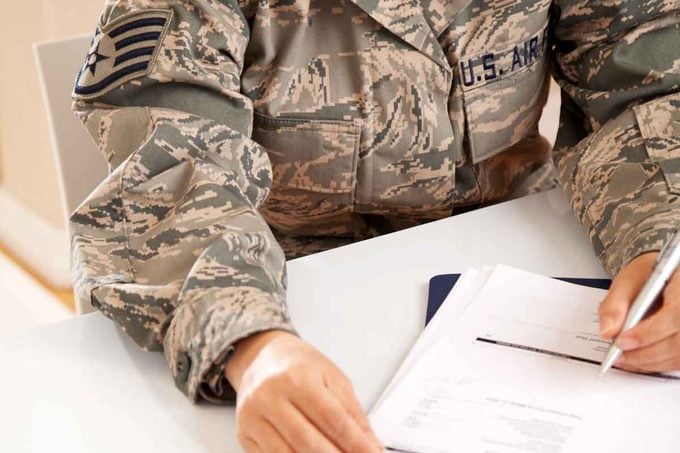13 First-Time Home Buyer Programs You Should Know About
Updated: Dec. 08, 2023

These grants and programs can help your homeownership dreams come true — whether you’re a first-time or repeat home buyer.
Buying a home for the first time is a big deal. It’s exciting and, at times, frustrating, particularly because many people face significant financial hurdles. With saving up a down payment, getting approved for a mortgage and covering closing costs, there’s a lot to plan for and a lot that can hold someone back. There are many first-time home buyer programs to help.
We’ll go into detail for the most well-known federal first-time home buyer programs here, but there are plenty of local, state and private options as well. Check with your real estate agent or your state housing authority to learn more about those smaller programs.
Many of these programs can be used more than once or by second- or third-time home owners, while some are for first-timers only.
On This Page
FHA Loan
FHA loans are the most popular first-time home buyer programs. These loans are insured by the Federal Housing Administration, a part of the U.S. Department of Housing and Urban Development (HUD). Since they are backed by the government, there is less risk to the lender, and the lender can accept lower credit scores and down payments, which is ideal for young or first-time buyers.
In order to qualify for an FHA loan, the property must be your primary residence, not a vacation home. David Bitton, Co-Founder and CMO of DoorLoop, explains some of the other eligibility requirements: “Home buyers with credit scores of 580 or above may be eligible for an FHA loan with as little as a 3.5 percent down payment. With a 10 percent down payment, the home buyer’s credit score can range from 500 to 579. However, the interest rate rises as the credit score falls.”
FHA Section 203(k)
FHA Section 203(k) is great for DIYers looking for a fixer-upper. It helps buyers finance the purchase and the rehabilitation of a home, as long as the renovations cost $5,000 or more, according to the HUD. Instead of taking separate loans for the purchase and the renovations, this home buyer program folds it all into the original mortgage.
This is another loan backed by the Federal Housing Administration. “The 203(k) is mostly targeted toward homebuyers looking to purchase older properties with some repairs needed instead of newer ones,” explains Jeff Johnson, a real estate agent and acquisition manager of Simple Homebuyers. The HUD also backs loans intended exclusively for property improvements, not purchases. These help buyers finance home improvements they might not otherwise be able to afford.
USDA Loan
USDA loans are unique in that they have location requirements. “Issued by the USDA Rural Development Guaranteed Housing Loan Program, these loans are zero down payment mortgage loans for rural buyers,” explains Johnson. It’s a good option for people who want to move to a small town. If you’re looking for a primary residence in an eligible rural area, look into this first-time home buyer program.
“The USDA loans are specifically catered to low-income households, and thus, they require no down payment for qualification,” says Johnson. “But if you do put little or no down payment, you will have to get mortgage insurance.” The USDA provides an online tool to check income eligibility.
VA Loan

VA loans are “mortgages targeted toward active and veteran service personnel and their surviving spouses,” says Johnson. Like FHA loans, they’re provided by private lenders and backed by the government, but they’re backed by the U.S. Department of Veterans Affairs instead of the FHA. They’re generous loans, but VA loans are known for being less desirable to sellers in a competitive real estate market. The extra restrictions and regulations are consistent across government-backed loans.
There are many benefits of VA loans, though. “These benefits include no down payment, no mortgage insurance, and no prepayment penalties,” says Johnson. And while this is a popular first-time home buyer program, it’s a benefit that can be used multiple times. A military family can use a VA loan for their first home and their downsized retirement home.
Good Neighbor Next Door
The HUD’s Good Neighbor Next Door Sales Program helps public servants — law enforcement officers, teachers, EMTs and firefighters — buy affordable homes. “They can purchase properties for 50 percent off the retail price and finance them with down payments as low as $100,” says Bitton.
To be eligible for the program, the home must be in a HUD revitalization area, and it must be the buyer’s primary residence for at least three years, Bitton adds.
National Homebuyers Fund Down Payment Assistance
Some first-time home buyer programs provide grants, rather than assistance securing a mortgage. The National Homebuyers Fund (NHF) Down Payment Assistance (DPA) is one example. “The NHF is a nonprofit public benefit corporation that provides grants to qualified borrowers for closing and/or down payment costs, including first-time home buyers and repeat buyers,” says Bitton.
The assistance is up to five percent of the mortgage loan amount, and it can be used for down payment or closing costs. The program isn’t one-size-fits-all, so the assistance could be forgiven or there could be repayment options, depending on the buyer’s situation.
Fannie Mae or Freddie Mac
Fannie Mae and Freddie Mac are long-standing mortgage programs created by Congress. The Federal Housing Finance Agency states that Fannie Mae was created in 1938 and Freddie Mac was created in 1970.
“They don’t have their own mortgage but buy mortgages from other lenders in the secondary market,” explains Johnson. But what’s the difference? “Fannie Mae buys and guarantees mortgages from bigger banks, while Freddie Mac does so from smaller lenders.”
Fannie Mae and Freddie Mac both offer multiple programs, such as mortgage, refinancing and renovation assistance. The Freddie Mac Home Possible mortgage is one example. “With a three percent minimum down payment, this is a lifesaver for first time buyers,” says Ben Fisher, a real estate agent with The Fisher Group in the Park City, Utah, area. A similar mortgage from Fannie Mae, called the HomeReady Mortgage, also has a three percent down payment. These programs have lower down payments but require better credit scores — at least 620 — than FHA loans.
Fannie Mae HomePath Ready Buyer
Fannie Mae also offers a program specifically for first-timers called the HomePath Ready Buyer Program. This first-time home buyer program is part education and part financial assistance. Buyers who complete the homeownership education by Framework and purchase a HomePath home “may receive up to three percent in closing cost assistance,” according to Fannie Mae. This program can be combined with the HomeReady Mortgage mentioned above.
Energy-Efficient Mortgage (EEM)
The Energy Efficient Mortgage program (EEM) is another FHA program. The EEM program “is designed to help homeowners save money on their utility bills and help them finance energy-efficient improvements,” explains Johnson, which makes “more of their income available for mortgage payments.” The program can also be used to purchase homes that are already energy efficient, such as Energy Star certified homes, according to Energy Star.
Fannie Mae also offers an energy efficient mortgage program: HomeStyle Energy Mortgage.
Native American Direct Loan
Native American Direct Loans (NADL) are for Native American buyers who are veterans or who are married to veterans. NADLs can be used to buy, build or improve homes on federal trust lands. Like other VA loans, this is a reusable benefit, but it’s popular among first-time home buyers.
NADLs offer low interest rates without a private mortgage insurance requirement. They also don’t require a down payment. For questions regarding eligibility for this and other VA loans, contact your Regional Loan Center.
What To Know About the First-Time Homebuyer Act of 2021
You may have heard of a new first-time home buyer program in 2021. It’s officially called the First-Time Homebuyer Act of 2021, but you may also hear something like “Biden’s homebuyer tax credit.” Instead of a mortgage program that prospective buyers must apply for, this is a tax credit from the federal government. And it’s not really new; it’s a modification to an existing tax credit.
To put it simply, this program would raise the maximum first-time home buyer tax credit from $8,000 to $15,000. But not everyone qualifies.
To qualify for the credit, Bitton explains that the following conditions must be met:
- Eligible home buyers must not have been co-signed on a mortgage loan or owned a property in the previous 36 months;
- Must not exceed 60 percent of the area’s median income;
- Must be at least 18 years old or married to someone who is at least 18 years old on the date of purchase;
- Most not purchase the home from a relative;
- Must acquire the home on or after January 1, 2021.
What To Know About the Downpayment Toward Equity Act of 2021
Here’s another first-time home buyer program newly introduced in 2021: the Downpayment Toward Equity Act of 2021. This is a program intended to help low-income buyers cover down payment and closing costs with up to $25,000 in grant money.
According to Bitton, these are the current eligibility requirements:
- Eligible homebuyers must make no more than 20 percent higher than the area’s median income;
- Must use a government-backed mortgage, such as those mentioned above;
- Must be a primary residence.
The Bureau of Economic Analysis provides median income information by county and metropolitan area.
First-Time Home Buyer Programs through Banks
Conventional mortgages through banks are hard to get for many people, so some banks offer their own grants and mortgage programs. One example is Bank of America’s Community Homeowner Commitment. This program offers eligible buyers up to $10,000 toward a down payment and up to $7,500 toward closing costs. Check with mortgage providers in your area to see if they offer their own first-time home buyer programs.
Local Grants and Programs
In addition to the national programs mentioned here, there are many state and local first-time home buyer programs. The National Council of State Housing Agencies provides resources for finding programs in your state. You can also check with the HUD to find local programs by state.